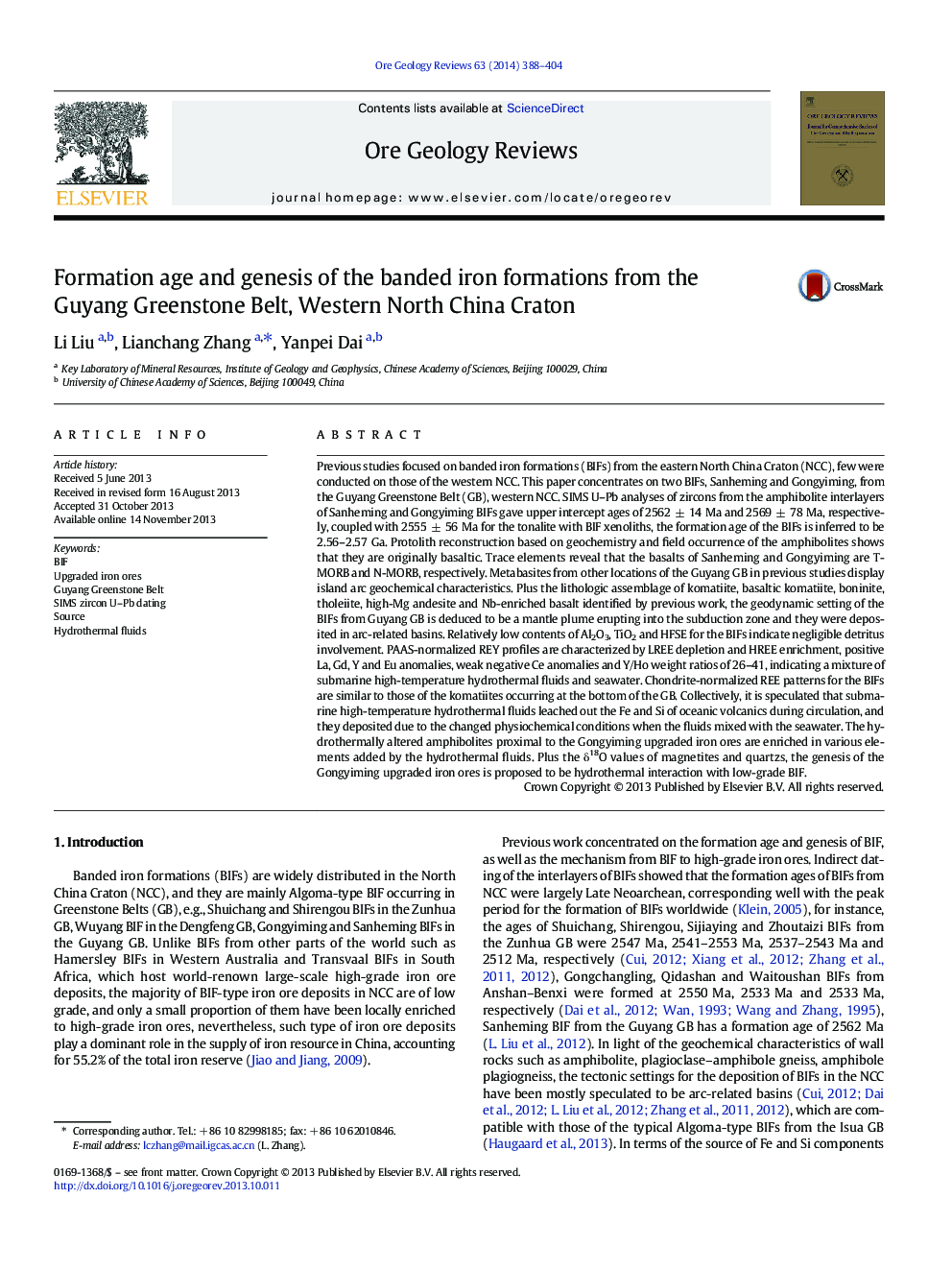| کد مقاله | کد نشریه | سال انتشار | مقاله انگلیسی | نسخه تمام متن |
|---|---|---|---|---|
| 4697218 | 1637240 | 2014 | 17 صفحه PDF | دانلود رایگان |

• The formation age of BIFs from the Guyang Greenstone Belt is 2.56-2.57 Ga.
• Geodynamic setting of Guyang GB is mantle plume erupting into the subduction zone.
• Fe and Si were derived from the high-T hydrothermal fluids leaching oceanic crust.
• Low-grade BIF was upgraded via the interaction with hydrothermal fluids.
Previous studies focused on banded iron formations (BIFs) from the eastern North China Craton (NCC), few were conducted on those of the western NCC. This paper concentrates on two BIFs, Sanheming and Gongyiming, from the Guyang Greenstone Belt (GB), western NCC. SIMS U–Pb analyses of zircons from the amphibolite interlayers of Sanheming and Gongyiming BIFs gave upper intercept ages of 2562 ± 14 Ma and 2569 ± 78 Ma, respectively, coupled with 2555 ± 56 Ma for the tonalite with BIF xenoliths, the formation age of the BIFs is inferred to be 2.56–2.57 Ga. Protolith reconstruction based on geochemistry and field occurrence of the amphibolites shows that they are originally basaltic. Trace elements reveal that the basalts of Sanheming and Gongyiming are T-MORB and N-MORB, respectively. Metabasites from other locations of the Guyang GB in previous studies display island arc geochemical characteristics. Plus the lithologic assemblage of komatiite, basaltic komatiite, boninite, tholeiite, high-Mg andesite and Nb-enriched basalt identified by previous work, the geodynamic setting of the BIFs from Guyang GB is deduced to be a mantle plume erupting into the subduction zone and they were deposited in arc-related basins. Relatively low contents of Al2O3, TiO2 and HFSE for the BIFs indicate negligible detritus involvement. PAAS-normalized REY profiles are characterized by LREE depletion and HREE enrichment, positive La, Gd, Y and Eu anomalies, weak negative Ce anomalies and Y/Ho weight ratios of 26–41, indicating a mixture of submarine high-temperature hydrothermal fluids and seawater. Chondrite-normalized REE patterns for the BIFs are similar to those of the komatiites occurring at the bottom of the GB. Collectively, it is speculated that submarine high-temperature hydrothermal fluids leached out the Fe and Si of oceanic volcanics during circulation, and they deposited due to the changed physiochemical conditions when the fluids mixed with the seawater. The hydrothermally altered amphibolites proximal to the Gongyiming upgraded iron ores are enriched in various elements added by the hydrothermal fluids. Plus the δ18O values of magnetites and quartzs, the genesis of the Gongyiming upgraded iron ores is proposed to be hydrothermal interaction with low-grade BIF.
Journal: Ore Geology Reviews - Volume 63, December 2014, Pages 388–404